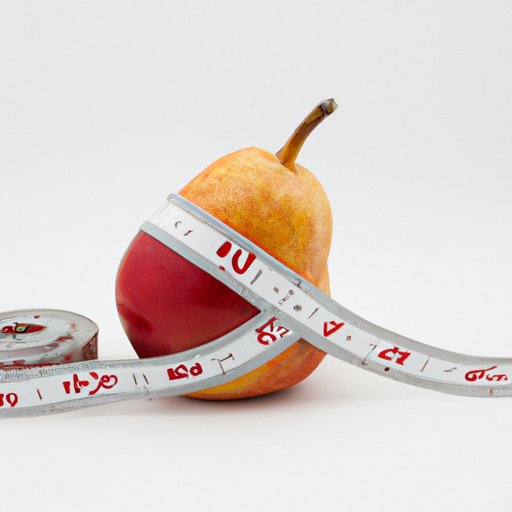I. Introduction
Measuring your waist and hips accurately can be an essential tool for maintaining a healthy body as it helps identify health risks such as obesity, diabetes and heart disease. Many people struggle to take accurate measurements, which can lead to incorrect conclusions and potential health risks. The goal of this article is to provide a step-by-step guide on how to measure waist and hips accurately, explain the importance of correct measurements for maintaining good health, and offer expert tips for getting it right.
II. A Step-by-Step Guide to Taking Accurate Waist and Hip Measurements
To take accurate measurements, you’ll need a fabric tape measure and a mirror. Follow these simple steps:
- Wear tight-fitting clothes and stand up straight with your feet shoulder-width apart.
- Locate your natural waist, which is the smallest part of your waistline. Measure this point by wrapping the tape measure around your waist in a straight line above your belly button.
- To measure your hips, stand up straight with your feet together. Find the widest part of your hips and buttocks and wrap the tape measure around this region.
- Take measurements in the morning before having breakfast and after emptying your bladder. Take the measurements at the same time and under the same conditions to avoid variations.
Follow these simple steps to get accurate measurements, and be sure to take multiple measurements to ensure your results are consistent.
III. Why Measuring Your Waist and Hips is Important for Maintaining a Healthy Body
Measuring your waist and hips accurately is vital for maintaining a healthy body as it can help identify health risks such as obesity, heart disease and diabetes. Many studies have shown that people with larger waistlines are more likely to develop these conditions.
According to the World Health Organization (WHO), a waist circumference of 94cm (37in) or more for men and 80cm (31.5in) or more for women increases the risk of developing heart disease and diabetes. A circumference of 102cm (40in) or more for men and 88cm (34.5in) or more for women significantly increases the risk of developing obesity-related disorders such as metabolic syndrome, a cluster of conditions that increases the risk of heart disease, stroke, and diabetes.
IV. The Dos and Don’ts of Measuring Your Waist and Hips for Accurate Results
Below are some common mistakes people make while measuring their waist and hips, along with some dos and don’ts to follow:
- Don’t suck in your stomach or push out your buttocks while measuring.
- Don’t measure over bulky clothing as it can affect your measurements.
- Don’t let the tape measure sag or twist while wrapping it around your waist or hips.
- Do stand up straight with your back against a wall while measuring.
- Do use a fabric tape measure, as it provides accurate and consistent measurements.
- Do take measurements at the same time, preferably in the morning before breakfast, and under the same conditions to ensure accuracy.
By following these dos and don’ts while measuring your waist and hips, you’ll get accurate results and reduce the risk of making common mistakes that can affect measurements.
V. Measuring Your Waist and Hips: Understanding the Relationship Between Body Shape and Health Risks
Measuring your waist and hips can help categorize your body shape as either apple-shaped or pear-shaped. An apple-shaped body has more fat around the midsection and is common in men, while woman usually have a pear-shaped body with more fat around their hips and thighs.
Research has shown that carrying excess fat around the midsection, or having an apple-shaped body, increases the risk of heart disease, diabetes, and metabolic syndrome. On the other hand, having a pear-shaped body and carrying excess weight in the hips and thighs is associated with a lower risk of these same conditions.
VI. Expert Tips for Measuring Your Waist and Hips Correctly: What You Need to Know
Here are a few additional tips from experts to help you get accurate measurements:
- Take measurements after exhaling, as inhaling can cause slight variations.
- Make sure the tape measure is level around your waist and hips, not angled.
- If you’re having trouble locating your natural waist, twist your torso left and right, and the crease that forms near your waistline is your natural waist.
- If you’re having difficulty measuring your hips, sit down and wrap the measuring tape around the widest part of your hips and buttocks.
- Don’t be discouraged if your measurements aren’t exactly where you want them to be. Taking accurate measurements is a starting point for making changes to improve your health.
VII. Conclusion
Measuring your waist and hips accurately is essential for maintaining a healthy body, identifying health risks, and making positive changes to your lifestyle. By following the step-by-step guide and expert tips provided in this article, you can take accurate measurements and avoid common mistakes. Take action today and share this article with your friends and family, to encourage them to take positive action towards their health.
